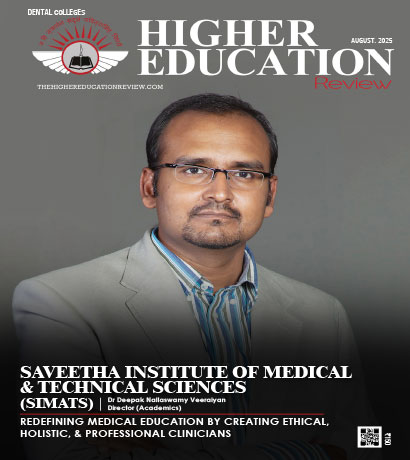Why Creative Education Is the Future of Higher Learning
 The landscape of higher education is shifting rapidly. As traditional academic models are challenged by the demands of a dynamic, tech-driven world, creative education has emerged as a transformative force. Institutions that prioritize adaptability, innovation, and applied skills are gaining traction across the globe. One such example is YOOBEE, an education provider that embodies the future of creative learning through its unique, industry-aligned programs.
The landscape of higher education is shifting rapidly. As traditional academic models are challenged by the demands of a dynamic, tech-driven world, creative education has emerged as a transformative force. Institutions that prioritize adaptability, innovation, and applied skills are gaining traction across the globe. One such example is YOOBEE, an education provider that embodies the future of creative learning through its unique, industry-aligned programs.
A Changing World Demands Creative Solutions
Today’s economy is no longer driven solely by conventional business or technical skills. Instead, creativity, design thinking, and innovation have taken center stage. Employers increasingly seek individuals who can not only solve problems but do so in imaginative and human-centered ways. From UX designers to animation specialists, creative professionals are reshaping industries from marketing and entertainment to education and tech.
Higher education must respond to this shift. The traditional lecture-based, siloed structure is no longer sufficient to prepare students for the jobs of tomorrow. Instead, institutions need to foster interdisciplinary thinking, collaborative projects, and real-world application — all hallmarks of a strong creative education model.
Beyond the Canvas: Creativity as a Life Skill
Creative education is often misunderstood as being relevant only to artists or designers. In reality, creativity fuels critical thinking, resilience, and adaptability—traits essential in every career field. Whether it's a software engineer developing intuitive interfaces or a business leader rethinking strategy, the ability to approach challenges with creativity is a competitive advantage.
Furthermore, creative education fosters emotional intelligence and empathy. These are increasingly valued not just in the arts, but in leadership, healthcare, customer experience, and social innovation. In this way, creative training enhances both technical capability and human insight, offering a well-rounded foundation for professional success.
Learning That Mirrors the Real World
One of the most compelling aspects of modern creative education is its alignment with industry needs. Institutions like YOOBEE are breaking the mold by offering practical, hands-on training that mirrors the demands of professional environments. From day one, students work on real projects, build portfolios, and gain exposure to the tools and technologies used in the field.
This emphasis on experience over theory allows students to graduate with job-ready skills, not just abstract knowledge. In contrast to the outdated model of spending years studying before entering the workforce, creative programs encourage immediate application of learning, building confidence and momentum in students from all backgrounds.
Innovation in Curriculum and Delivery
Creative education also leads the way in pedagogical innovation. Online learning platforms, immersive studios, and collaborative project-based assessments are redefining how students engage with material. These methods promote deeper learning by encouraging experimentation, feedback, and iteration—skills directly transferable to the real world.
YOOBEE, for example, embraces flexible, tech-savvy delivery models that support different learning styles and schedules. This approach not only broadens access to education but also reflects the way modern professionals operate—remotely, collaboratively, and across time zones.
Empowering the Next Generation of Global Talent
Creative education is uniquely positioned to empower a new generation of thinkers and doers. As boundaries between industries continue to blur, and technology redefines every sector, the ability to think laterally, adapt quickly, and bring fresh perspectives is more valuable than ever.
Through its focus on innovation, inclusivity, and hands-on learning, creative education cultivates globally relevant talent. Graduates are not only employable but equipped to lead change, launch ventures, and contribute meaningfully to society. In this way, creative education is not simply a trend — it is a necessity for building a more adaptive and resilient global workforce.
Conclusion
As the world continues to evolve at breakneck speed, the value of creative education is becoming undeniably clear. Institutions that embrace this model — like YOOBEE — are helping students not just keep pace, but lead the charge into the future. With its fusion of artistic expression, technological skill, and real-world application, creative education is redefining what it means to be “prepared” for the professional world. In doing so, it is setting a new standard for what higher learning should be: dynamic, inclusive, and unapologetically forward-thinking.

